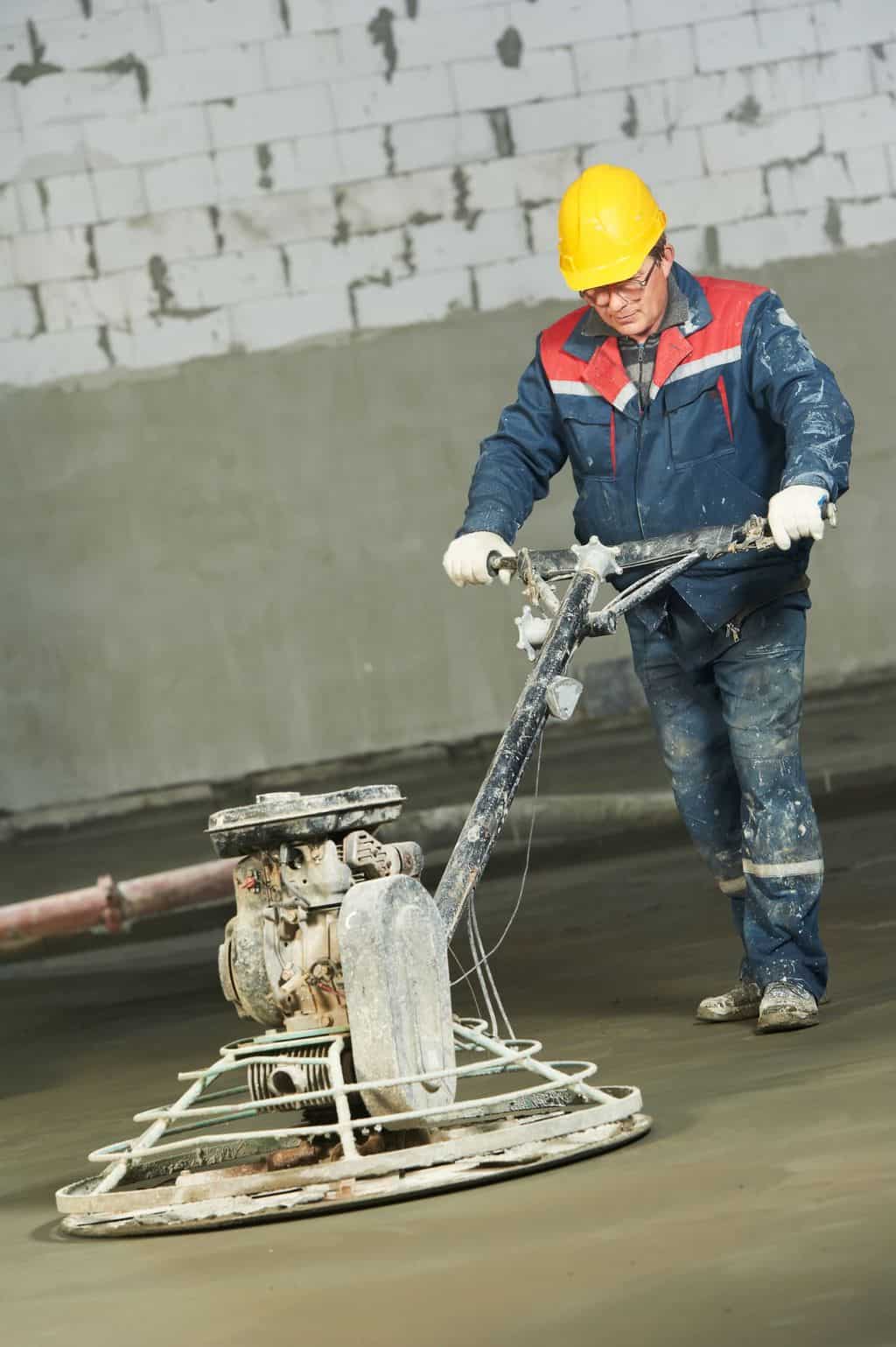Are you looking for a tried and true durable flooring solution but are bored of tiles? Do you need your flooring to have the durability of concrete but, at the same time, you want your house to be fashionable? Give your home a fresh new look and choose to install stained concrete flooring. This type of flooring can solve many flooring questions and issues:
- The hard surface is unmatched; it collects less dust and dirt, agents that cause problems for people with allergies.
- You can create the look you want with the scoring patterns you select, and the color you choose for stain.
- As long as you are starting with a solid, stable foundation, the flooring will not crack or shift on you over time.
- Concrete Flooring is incredible affordable!

Why Choose Stained Concrete Flooring?
One of the smartest ways to make your floor a visually appealing space is to use stained concrete. Selecting stained concrete flooring for major projects has become one of the most popular flooring approaches in both new construction and renovations. The unique character it adds to a home is one of the reasons people are choosing it, rather than any other flooring option. Stained concrete flooring is durable, easy to clean, and is perfect for people who suffer from allergies.
1. Choose Concrete Flooring to Keep Allergies at Bay
It is well documented that carpet can be a major factor in an increase in allergies. The fibers in carpet trap dust, dirt, mold, and other allergens, and no amount of vacuuming or carpet cleaning can prevent this from recurring. Proper installation and sealing the concrete floors with a non-VOC sealer will make it impossible for any mold growth underneath these floors, a problem that hardwood or even laminate floors can have. Concrete flooring is easy to clean and maintain and a really smart and inexpensive choice, especially for allergy sufferers!
2. Having Concrete Flooring is an Easy Process, From Installation to Matinence
Installing stained concrete flooring is not only an easy process, but also highly cost efficient. The durability of concrete flooring is an added advantage. You may wonder if it is difficult to clean this type of floor or if cleaning stained concrete requires any special processes or products, but this is not the case with this type of flooring. Cleaning is completely easy, especially since, if properly installed, the stained concrete floor will be smooth and will not catch dust or stains easily. Stained concrete flooring not only helps in maintaining a clean home, but also a healthy home.

3. You Can Customize the Flooring Colors and Effects
You can make your own color variations in the stained concrete by mixing and matching or applying acids at different rates. Different application processes allow you to control how mottled or marbled the stained concrete flooring looks. If you prefer the marbled look, you will simply spray the acid on the concrete when staining, as this will give it the most variegated design. If you want to downplay the mottled look, you can use a push broom or other brush to go over the wet acid in a figure-8 motion to make it smoother and more even. Don’t expect the final look of the stained concrete to be a smooth color, though, because this finish is translucent, so there will be areas of darkness and lightness naturally in the concrete finish.
Getting a customized look to your floor is another reason for selecting stained concrete flooring. When selecting stained concrete flooring keep in mind that acid will give your floors a marble-like, variegated color pattern. The colors that are usually seen in this concrete flooring are browns, reddish browns, and even green. An added advantage of this type of flooring is that making changes to the staining on this kind of flooring is just as hassle free as installing it; hence you can have a change of patterns or color every few years if you so desire.

So How Do You Go About Customizing Your Concrete Flooring?
This may be the best part: staining concrete flooring for a completely customized look is an easy thing to DIY!
Pouring and curing a concrete floor is a very doable process, if you are willing to put in the labor. Typically, with concrete, it is almost always worthwhile to hire a licensed contractor to install an interior concrete floor, since the labor involved is intense, mistakes can be costly, and the materials used in a concrete floor are so inexpensive. If, however, you are going to do the concrete pouring yourself, there are limitless how-to videos out there to show you how. This how-to video is a great short video that shows you the process on a small scale, but gives the specifics of the process of installing concrete inside the home.
Staining Concrete Flooring
Once the concrete is installed, make sure you follow these pre-requisites before staining concrete flooring in your home:
- A brand new concrete floor that is not worn is the best option for staining. If you are starting with a preexisting concrete floor and just wanting to stain it, it must be completely smooth and uniform in order for the stain to make the flooring look the best that it can.
- If you are staining a newly poured concrete floor, it is important to allow time (at least three weeks, depending upon the suppliers instructions) for it to cure completely before you attempt to stain it.

Now, you are ready to stain the flooring! While the process is called “staining” and these are referred to as “stained concrete,” you do not actually use a stain on the concrete floor. What you are really doing is causing a chemical reaction between the minerals in the concrete, the acid you will be using, water, and inorganic salts. This chemical reaction creates the colors and the mottled look on the concrete floor.
What Tools Do You Need to Stain Concrete Flooring?
There are very few tools that you need to stain concrete flooring. Check out the video below (yes, I realize the intro is a little silly, but it is very informative and, hey, also fun!) for an overview of the process and a little more detail about the concrete and staining process. After the new concrete is poured and has cured (or, if you are staining preexisting concrete, it has been cleaned thoroughly), you will need to gather the following tools for your acid staining process:
- A Sprayer (or assorted sprayers): The manufacturer of the concrete staining acid will recommend the right kind of bottle for your product. You may also want to spritz the concrete with water from another spray bottle to further dilute the stain and produce a little more variation within the coloring.
- Paint Roller: To apply the sealer after the acid application process is finished.
- Masking tape and paper: Before starting, make sure to carefully mark off walls and floors where the stain will not go, as acid stains are permanent.
- Rubber gloves and safety glasses: You are working with acid, be sure to err on the side of caution! Also, make sure to wear heavy duty shoes and clothes that you won’t mind ruining.

The basic process is that you will do the staining simply by spraying the acid solution onto the concrete in several applications. Brushes, assorted sprayers, and dilutions of the acid with water and ammonia concentrations can all be used to increase the customization and really enhance your final completed masterpiece. One customized stained concrete floor I saw had a sun pattern scored into the concrete. Someone had gone to a lot of effort and laid gold glitter into the scores before the stain was applied. After the final “varnish” coat was finished, the gold glitter solar pattern was still visible, but subtle and really unique.

Hi Roger,
In this case, I would suggest that you get what you want. Pets can be hard on any floor. If you don’t mind your new flooring becoming distressed then that’s a plus. Many people don’t want their floors to achieve that distressed look from experiencing life and don’t consider it attractive. Some do!
Any tips on stripping wax and sealer off of existing stained concrete? What do I use and how long do I let it sit? I have tried some acetone and paint stripper, the stripper is pretty harsh, and if you leave it on too lang can be pretty damaging!
We have stained concrete floors in our poolhouse that have been sealed with several coats of finish. We are having problems with scuff marks everywhere!We can clean the floors but cant find anything that will remove these marks. Help!
Help!
We have 1300 sq ft of stained concrete in our home. We have been using QC Cemseal every six months to restore the original shine. However, the scuff marks are getting out of control and I am at my wits end. We are condidering having the concrete polished for a more industrial strength, but at almost $8,000 we are trying to find an alternate solution until we can afford the polishing. We have used Mop and glow, which made things worse and I can’t continue to seal this much floor every two-three weeks. Would a buffing help restore the floor or do we need to strip the floor and start over with another sealant?
Hi Mark,
This topic has been covered before, please read through the comments. You should also wander over to http://www.aquamix.com and look their products over. They also have a toll free number you can call and are very helpful. They have very good products, good reputation. You do have to be careful stripping stained concerete so that you don’t ruin the stain.
Hi Sheila,
What products have you used on the stained concrete? I can’t really offer much in the way of helpful advice without knowing what has been used. It may be possible to buff the scuffs out.
Hi Jen,
I’m not familiar with QC Cemseal, but I do know how awful Mop ‘n’ Glo is for floors. I don’t know if buffing would really help at all because you’re still going to be dealing with the same product(s) being on your floor. Unfortunately, it sounds as if stripping and sealing with another product may be just the thing to do, but it sure wouldn’t hurt to try buffing first and then being careful about wearing shoes that cause scuff marks or moving furniture.
Thank you for responding. We have a water-base stained concrete, with three coats of an acrylic urethane, and one coat of a water-base concrete wax.
Hi Sheila,
I’m not sure which product would be the culprit, but I’d have to guess that it’s the concrete wax. Any particular reason this was applied over the urethane?
Question 2. I stripped some of my existing concrete, and in some cases even used some light sand paper, and re-applied some stain to darken up some light areas in my house, and the stain didnt fizz, it also didnt take very well. I test stained a section in my garage (untuched concrete) and it fizzed like crazy. Why wont my stain fizz when re-applying to an already stained portion that was stripped? Can we post photos in this forum some how? Also, (and sorry for the long post!) How can I tell if my floors have been sealed with a sealer? I have this suspicion that my floors were “sealed” with 2 coats of wax and no sealer. Im about to strip a test area in my closet and apply sealer and wax and see waht happens.
Hi Mark,
It’s possible that there is still some sealer/wax residue. Also, remember, a stain is not actually used on the concrete floor, rather it is a chemical reaction that occurs between the minerals in the concrete, acid, water, and inorganic salts. You will probably need to abrade the floor some more in order to expose what the acid reacts with. This is why your floor should have been sealed first (helps seal in the color first) and then waxed/finished.
We acid stained our entire house, Kemiko stain – vintage umber and black. It turned out beautiful! The supply shop we purchased it from recommended ‘Sta-bright’ sealer. It is a water based sealer that we just mopped on. We tested it in one bedroom. We like the satin finish it has (it doesn’t show dirt easily), however did not like depth of color and dry look. So we used a solvent based sealer for the rest of the house – ‘Misty-Clear’. We applied it with rollers, two coats. It looks fantastic. Provides a wet-look, and great depth of color. But it scuffs something awful, and doesn’t dry-mop well at all. The finish almost has a texture to it, and isn’t ‘polished smooth’. All of the sealers have been down now for four months, and we have never put a finish coat or wax down on top.
My questions: Should we apply a wax or finish coat over the sealer to minimize the scuffing and make it easier to maintain and dry-mop? If so, how? Buff it on? Should we buff the sealer itself to get a smoother finish?
Thanks so much for your help!
Tim
Hi Timothy,
I would try buffing it first before going to the expense of adding additional coats of sealer/finishes.
If that doesn’t meet your satisfaction, you can apply more sealer or other finishes so long as they are compatible with the sealer you’ve already used.
Hello! We’ve recently purchased a home with stained concrete floors. I thought it would be easy to maintain but found it to be rather challenging. I have a couple questions. #1 What is the best way to get hard water spots off? #2 Is there a way to clean it and it look like it was just cleaned with some kind of shine, or am I stuck with that dull look? I do not know how or if it was sealed. I just want my house to look clean when I’ve just mopped, not dusted.
Thank you!
Hi La Donna,
I would suggest using a vinegar/water mixure to clean (1 part vinegar to 15 parts water or more), use a microfiber mop. I would also suggest either a second, dry microfiber mop head or microfiber towel/rag to avoid spots/streaking. The spots are simply caused from water sitting and drying naturally – the water needs to be cleaned up and not left to sit. Keep in mind too, it’s possible that the sealer needs buffed or even reappied (worst case scenerio is needing stripped & resealed – but doesn’t sound like it). Your shine is only going to be as good as the sealer’s finish and dependent upon if it was a high-gloss finish to start with.
Hi: I acid stained our 2000 sq ft. 7 years ago.
After about 2 years I urethaned with water based product to get a satin finish. The urethane did not lay flat. There were streak marks. I urethaned it again, and again you can see streaks where the light hits it. I am now selling my home and would like to correct this problem. I would really not want to spend the money to lay down wood or stone flooring.
Please help.
Thanks
We have acid stained floors that were sealed with Briwax (after the recommendation of a friend, whose floors came out great with it). We now have 2 problems, the first is that recently paper was laid on the floor by a contractor who was doing a repair job and he taped the paper to the floor, now there are tape marks where the tape was, and everything I have tried won’t get rid of it. (Again, these are tape marks that were not there before staining). I thought concrete would be more durable than being susceptible to new tape marks, when the floor has long been finished. The second question is that in some places, not all and therefore not consistent, we get heavy scuff marks that won’t buff out. Thanks so much for any help you might have.
Hi Cat,
Why didn’t the contractor fix this? Was he made aware of it at all? Is the problem a tape residue or maybe more of something along the lines of lifting up some of the wax? Since the floor has long been finished, have you done anything to maintain the finish? Waxes do have to be reapplied every so often. What are you using to try to get the scuff marks off?
Thanks for responding,…there was no contractor, we were the generals on the entire project. We finished and sealed the floors in December. It definitely was not tape residue and only appeared after tape and paper were applied recently. Since washing, scrubbing, and various cleaners haven’t changed the tape at all, it does look like the wax was lifted up where the tape was,..but when I applid more wax and rebuffed, there was still no change. That is also what I did to the scuff marks, but that didn’t resolve them either.
Since you’ve applied more wax already, the marks are now under it – they can’t be removed except for stripping and then re-waxing. I can’t guarantee that this won’t harm the stain.